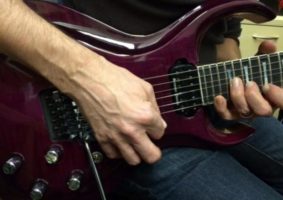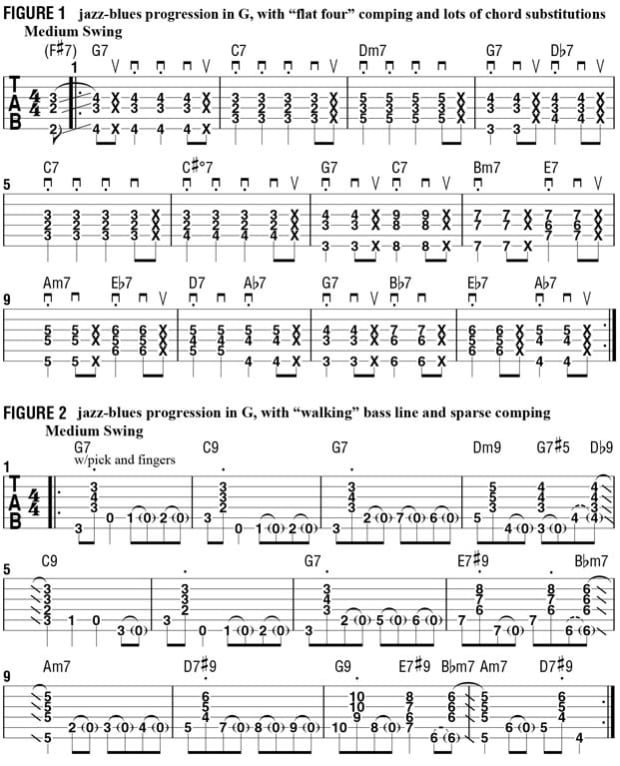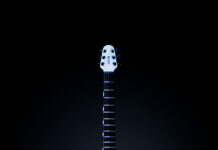
Colorful Jazz-Blues Chord Substitutions
Last month, I introduced the 12-bar jazz-blues progression, which is a more musically sophisticated cousin of the simpler “one-four-five” blues chord changes that most people are familiar with and serves as a more harmonically ambitious framework that jazz musicians almost universally prefer to solo over and use as a vehicle for improvising rich, colorful melodies that allude to interesting chord substitutions.
I’ll now continue where we left off and present a few commonly used variations on the jazz-blues progression that adventurous musicians will often interject.
FIGURE 1 is traditional “flat-four” comp (accompaniment) figure that’s a variation on FIGURE 2 from last month’s column and offers additional examples of chord substitutions that learned guitarists will add to a jazz-blues progression, with numerous subtle variations, in a two-guitar jam (no bassist or drummer).
Again, we’re using what arrangers call shell voicings, which include only a chord’s root, third and seventh (often voiced, low to high, root-seven-three) and what guitarists call “muted-string chords” because unused strings are muted with the fretting fingers, just like when you play a strummed octave.
Noteworthy chord substitutions used here include the following:
• A “two-five to the four chord” in bars 3 and 4, with Dm7 and G7 setting up the change to the four chord, C7, in a more harmonically active and interesting way than just preceding it with two bars of G7. A similar move occurs in bar 8, in this case with a “two-five to two.” Here, we approach the two chord, Am7, with Bm7 and E7.
• The “sharp-four diminished seven” chord in bar 6 (C#dim7), which is an outgrowth of the four chord (C7) that builds dramatic tension, which then resolves satisfyingly back to the one chord (G7) in bar 7.
• Another “quick change to the four” (C7) is the second half of bar 7, which creates a stronger “push” toward Bm7 in bar 8 than does approaching it with a full bar of G7.
• Numerous tritone substitutions, in bars 4 and 9–12. In each case, the expected root note is replaced by one located three whole steps above or below it, which are the same notes an octave apart. This adds interest and color to the bass line’s root motion, with smoothly descending chromatic movement used instead of angular down-a-fifth or up-a-fourth resolutions. Interestingly, in a tritone sub, the original chord’s dominant seventh now becomes the third of the new chord, and the third becomes the seventh.
Speaking of bass, FIGURE 2 presents a different kind of stand-alone accompaniment for a jazz-blues in G that features a cool “walking” bass line punctuated with staccato (short and crisp) chord “stabs,” most of which fall on an eighth-note upbeat, and numerous open-string “ghost-note” pull-offs (indicated in parentheses in FIGURE 2), which add drive to the otherwise quarter-note walking bass rhythm and help convey the desired swing feel.
The open-string pull-offs should be subtle and felt more than heard. Use hybrid picking to play this figure, picking the bass notes with downstrokes and plucking the chords with your bare fingers. I’ve expanded the shell voicings here to include an additional high note and “color tone” on the B string, which is either the chord’s fifth or ninth. When playing the chords marked by a staccato dot, quickly mute the strings immediately after plucking them by simply relaxing your fret hand’s grip.

Source: www.guitarworld.com









